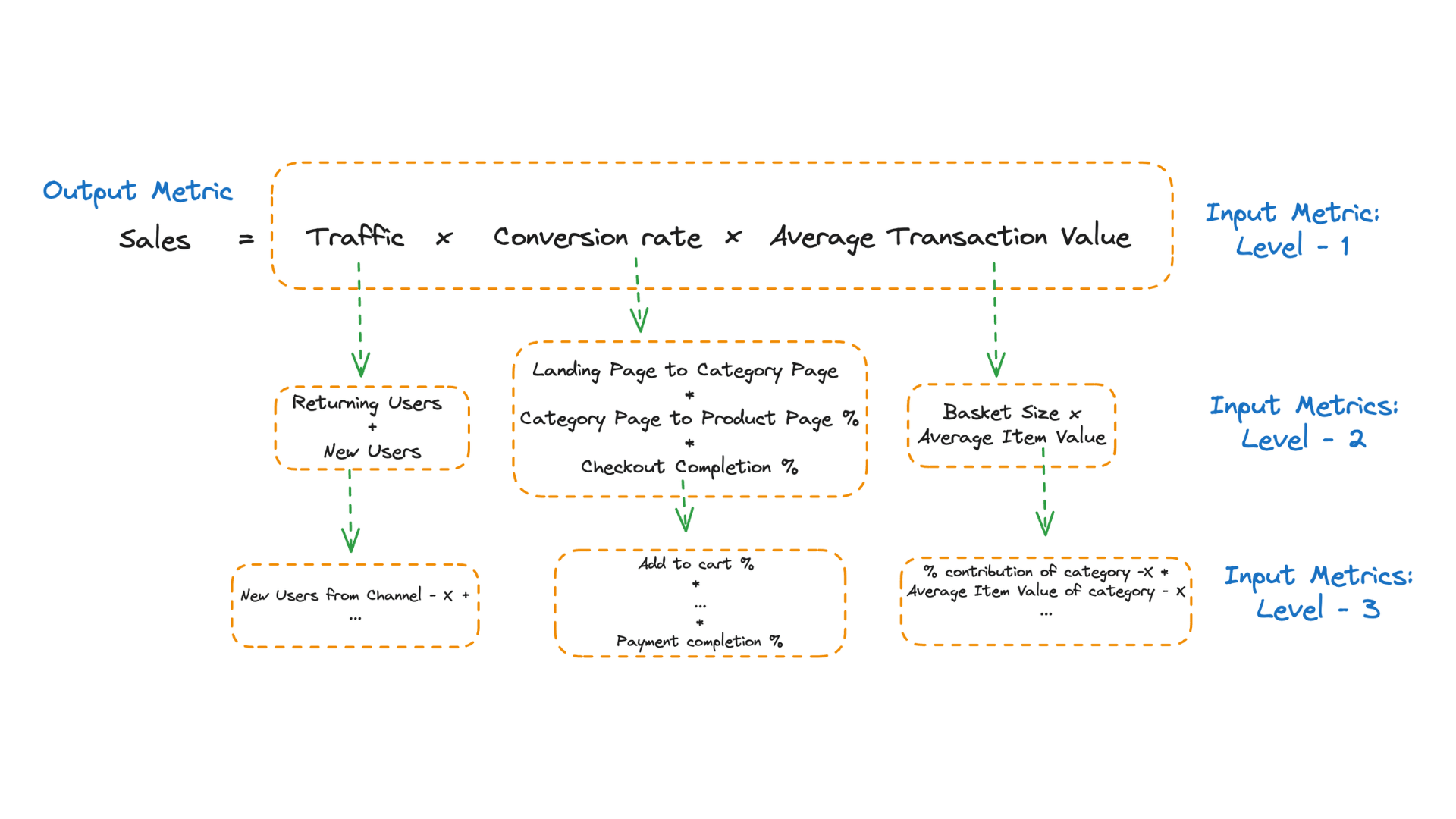How to establish a Hierarchy of Metrics?
Establishing a hierarchy of metrics means identifying the key output metrics a business aims to impact and then breaking them down into underlying input metrics that contribute directly to these outputs.
This hierarchy shows the cause-and-effect relationship between different levels of metrics.

Example:
For a content streaming platform, the hierarchy might place 'monthly active users' as a top output metric.
This could be broken down into inputs like 'new sign-ups', 'number of streams per user', and 'churn rate'.
Each of these inputs is further influenced by more specific metrics like 'campaign conversion rate', 'content engagement', and 'customer support interactions', respectively.
Significance:
The hierarchy of metrics allows businesses to trace back from the desired outcome (output metrics) to the factors they can control (input metrics) and adjust.
It provides a clear map for where to focus optimization efforts and how each metric influences another, from the most granular actions up to the ultimate business goals.